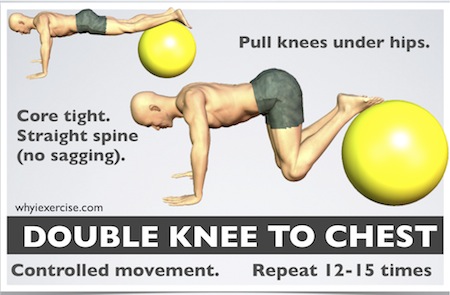I can’t think of an
athlete that doesn’t benefit from a strong core. Let me take that one step further: I can’t think of a living
human being that wouldn’t benefit from having a strong core. Core strength affects everything from
your posture to chronic back problems.
For cyclists, triathletes, and runners core strength is crucial to our
training. Many cyclists make the
mistake of thinking that riding a bike is an endeavor reserved only for our
lower extremities—not so.
Ever had back, shoulder,
or neck pains after a long ride or run?
It could be your core telling you you’ve got some work to do.
So as I sit here
stranded inside waiting out the behemoth that is the FrankenSandyApocolyptic
Hurricane of 2012, I am not letting this day indoors ruin my training
schedule. My coach, Michael
Gibbons of Walton Endurance, sent me a core workout for today that requires
little or no equipment, and will provide a gut/hurricane-busting workout all
without having to leave The Weather Channel’s coverage of all the carnage.
 |
| I can't say for sure, but I don't think this is real footage of Sandy. |
A perfect remedy for a
state-of-emergency induced day indoors, this workout is an advanced one, but
can be tempered to fit anyone’s ability level. Doing any of these exercises without a stability ball makes
them easier for beginners, so adjust as you see necessary.
Start with a basic
warm-up. You know, the standard
self-myofascial release. Don’t
feel bad; I had to look it up too. Myofascial release is a way of limbering up
the connecting tissue between your muscles, most often with a foam roller. This is a pretty good guide to
warming up in this manner.
Here is the
circuit—which you can do 2-3 times through depending on your ability
level.
1. Supine Bridge (with stability ball)
Lay flat on your back
(or on the stability ball). With
knees bent, lift your pelvis upwards until your body is straight from your
shoulders to your knees. Do 20-30
reps.
2. Side Plank (with top leg up)
Begin by lying on your left side with your left elbow flexed and the outside of the left foot in contact with the ground. Hold your right arm tight to the side of the body. For added difficulty, lift your top leg. Hold for 30-60 seconds and repeat on the opposite side.
3. Plank on stability ball
Begin by laying face down on the ground with the
elbows flexed. Brace yourself and hold for 30-60 seconds. For added difficulty, you can either
put your feet or elbows on the stability ball like in the pictures.
4. Side Plank (with lower leg up)
A similar technique is required here as with the
other side planks, this time you simply lift the lower leg. Hold for 30-60 seconds.
5. Knees to chest on stability ball
Start in a push-up position with your feet
elevated on the stability ball.
Roll the ball forward until your knees reach your chest. Do 20-30 reps. Most of the exercises to
this point have been quite easy to convert to do without a stability ball if
you don’t have one. This one is a
bit more difficult to do without a ball, but you could substitute another
workout of your choice like a double leg lift or something similar.
6. Prone Cobra (on stability ball)
This one is difficult for me, but it can do
wonders to strengthen your back—which I desperately need. Lie face down, or lean your hips on the
stability ball. Extend your arms,
and flex backwards like in the picture.
Do 20-30 reps.
Rest and recover for 1-2 minutes between
circuits. The recovery period is
and important part of any workout.
Don’t neglect it. Cool down
with an active stretching routine like this or this.
Think of this as a perfect antidote to cabin
fever, rather than simply a workout.
Incorporating a circuit like this one into your weekly training will
undoubtedly reap major benefits for your comfort while riding, running,
swimming, or even sitting on the couch—which it looks like I might be doing for
the next 48 hours. Happy hurricane
season everyone!










No comments:
Post a Comment